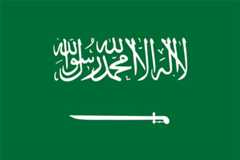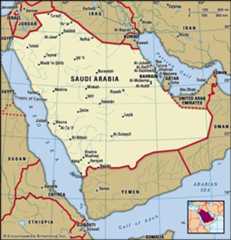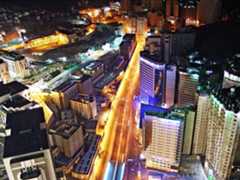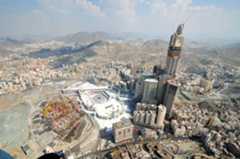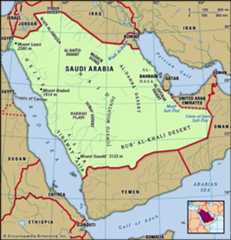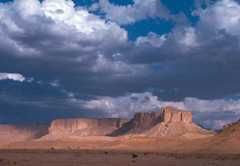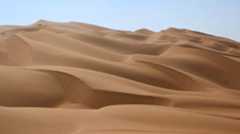ThePersian Gulf War and its aftermath
Our editors will review what you’ve submitted and determine whether to revise the article.
Saudi political leadership was challenged whenIraq, after having rejected attempted Saudi mediation, reasserted its earlier claims and invaded neighboringKuwait on August 2, 1990, precipitating thePersian Gulf War (1990–91). The Kuwaiti government fled to Saudi Arabia, and King Fahd denounced the Iraqi invaders. Fearing that Pres.Saddam Hussein of Iraq might invade Saudi Arabia next (despite Saudi assistance to Iraq during the Iran-Iraq War), the Saudis, breaking with tradition, invited theUnited States and other countries to send troops to protect the kingdom. This was done after Fahd had received theapprobation of the kingdom’s highest-ranking religious official, Sheikh Abdul Aziz ibn Baz, who agreed that non-Muslims could defendIslam’s holiest places. By mid-November the United States had sent 230,000 troops, which were the most important part of the coalition force that ultimately included soldiers from many other countries. The Saudis adroitly coordinated Arab and Muslimcontingents and also established diplomatic ties withChina, theSoviet Union, and, later,Iran. King Fahd expanded his goal beyond the protection of Saudi Arabia to include the liberation of Kuwait and, if possible, the overthrow of Saddam Hussein.
News•
With approval from Saudi Arabia secured in advance, the coalition, with some 800,000 troops (more than 540,000 from the United States), attacked Iraq by air on January 16–17, 1991. Saudi pilots flew more than 7,000 sorties and were prominent in the battles around the Saudi town of Raʾs al-Khafjī. In the four-day ground war that began on February 24, Saudi troops, including the National Guard, helped defeat the Iraqis and drive them out of Kuwait. Despite the clear military victory, the fullimplications of the war for Saudi Arabia were not immediately known.
William L. OchsenwaldJoshua TeitelbaumYet as time wore on, that cardinal event, in which a fellow Arab state threatened to rend years of the royal family’s accomplishments asunder, seemed to be a turning point for many aspects of Saudi political, social, and economic life. A certainmalaise set in, with various groups questioning the wisdom of the royal family and demanding accountability. Many citizens questioned how a regime that had spent such vast sums on defense would, in the end, be required to call on the help of non-Muslim outsiders when it felt threatened. In the internal political sphere, two opposition movements emerged, one Islamist and the other liberal and modernist, and forced Fahd to undertake severalinitiatives.
The economic impact of the Persian Gulf War was considerable, as Saudi Arabia housed and assisted not only foreign troops but also Kuwaiti civilians while at the same time expellingYemenis andJordanians, whose countries had supported Iraq diplomatically. Saudi Arabia purchased new weapons from abroad, increased the size of its own armed forces, and gave financial subsidies to a number of foreign governments. Higher Saudi oil production and substantially higher prices in the world oil market provided some compensation for the Saudi economy. However,gross domestic product per capita grew only marginally through the 1990s and in real terms actually fell in some years. Alanguid economy—in acountry perceived as otherwise being extremely wealthy—combined with a growth in unemployment to contribute to the kingdom’s sense of malaise. This disquiet added to a subsequent rise in civil unrest.
One of the first results of the altered situation in Saudi Arabia was King Fahd’s March 1, 1992, issuance of three important decrees: the Basic Law of Government; the Consultative Council Statute; and the Regions Statute. Whereas Fahd was responding to demands for greater governmental accountability, the first and second decrees contained a number of quasi-constitutional clauses. But since the government had often stated that theQurʾān and thesunnah (practices) of the Prophet were the country’s constitution, he was at pains to state that there had not been a “constitutional vacuum” in Saudi Arabia and that the new laws confirmed existing practice.
The Saudi dilemma was to respond to dissent while making as few actual changes in thestatus quo as possible. The Basic Law of Government changed the process used to select the heir to the throne by extending candidates to the grandchildren ofIbn Saud, enshrined the king’s right to choose his heir, established a right to privacy, and prohibited infringements ofhuman rights without just cause. The Consultative Council Statute set up an advisory body of 60 (later expanded to 120) members plus a chairman. While convoking a council gave the appearance of a step toward a more representative government, the council actually was appointed by the king and could be dissolved by him at will.
Fahd made it clear that he did not havedemocracy in mind: “A system based on elections is not consistent with our Islamic creed, which [approves of] government by consultation [shūrā].”
TheIslamist opposition
After the Persian Gulf War, Saudi Arabia’sIslamist opposition grew more influential. It was not made up of extremists like Juhayman. Instead, highly educated academics and Islamic preachers from the lower ranks of the establishmentʿulamāʾ formed its core. It was a loose agglomeration of various trends, but the main spokesmen were twocharismatic preachers,Salman al-Ouda andSafar al-Hawali. Their main grievance was that the regime failed to act according to what the opposition defined as proper Islamic norms in foreign and domestic affairs.Criticism of the government was not allowed in Saudi Arabia, but in September 1992 a group associated with the two clerics published a daring, lengthy, and detailed document called the “Memorandum of Exhortation,” in which they took the regime to task for having an overfinanced military that did not live up to expectations, for glorifyingdecadent and Westernized lifestyles, and for not allowing dissenting Islamist opinions to be expressed in print and on the airwaves.
The regime tried to rely on clerics with whom it had close ties to reign in the dissidents, but to no avail. The kingdom’s first organizedSunni Islamist opposition group, theCommittee for the Defense of Legitimate Rights (CDLR), was established in 1993. The committee was not a Western-style human rights organization—as its English-languagesobriquet might suggest—but an Islamist opposition group that demanded that the regime act according to the strict Islamic norms on which the country had been founded. Its original members were clerics and university faculty, and it was quick todisseminate its message via telephone facsimile and, later, the Internet.
The Islamist challenge that faced the regime was an especially troubling one inasmuch as the regime itself had risen to power and maintained its status by appealing to those same Islamic symbols. This attack threatened to undermine the Saud family’s very legitimacy, and the family reacted by outlawing the committee and arresting its members. The group thereafter operated abroad, in London, until it split in 1996.
Meanwhile, in 1994 the first mass Islamist demonstration was held in the central Arabian city of Burayda, following the arrest of al-Hawali. It was led by al-Ouda, who was arrested during the demonstration. While one could not conclude that Islamist opposition wasrampant, the fact that such a large demonstration was held at all was an indication that all was not right in the capital. The demonstration was followed by a further crackdown on dissent.
The dissidents condemned the regime’s supposed un-Islamic practices. Of particular concern to them was the presence ofU.S. troops and those of other non-Muslim countries on Saudi soil, a presence that—given the proximity of the two holy cities—they deemed not only an affront to their religion but a situation designed only to protect the regime. In November 1995 an explosion rocked the centralRiyadh headquarters of a U.S. government group that trained members of the Saudi National Guard. The explosion killed five Americans and two Indians. Three hitherto-unknown organizations took responsibility for the operation, and all of them demanded thewithdrawal of U.S. forces from the kingdom. While there was no proven connection between the bombers and the known leaders of the Saudi Islamist movement, in May 1996 Saudi authorities arrested and executed four youths who claimed—in televised confessions—to have been influenced by the CDLR and by the views of an Afghanistan-based Saudi Islamist financier,Osama bin Laden.
In June 1996 a massive explosion ripped through an apartment complex housing U.S. Air Force personnel. Nineteen U.S. servicemembers were killed, and hundreds were injured. This bombing remained unsolved, but U.S. and Saudi authorities suggested that Iranian-backed SaudiShiʿis were involved.
Although they still actively campaigned from abroad—particularly on the Internet—Islamists maintained a low profile within the kingdom throughout the 1990s. Indications were thatCrown PrinceAbdullah—who had effectively run day-to-day affairs after Fahd suffered a stroke in 1995—had either reached some kind of agreement with Islamist leaders or had been granted some form of grace period by them. In 1999 the government ordered the release of the opposition clerics al-Hawali and al-Ouda, and, although there were no indications of the conditions of their release, the two thereafter refrained from publicly criticizing the royal family.
Far more ominous was the development outside the kingdom of a network, which was associated with bin Laden, known asal-Qaeda. Although there were no direct attacks against theregime either at home or abroad, al-Qaeda staged a number of violent attacks against U.S. targets throughout the world. These attacks culminated in theSeptember 11 terrorist attacks in 2001, a majority of whose participants were citizens of Saudi Arabia.

